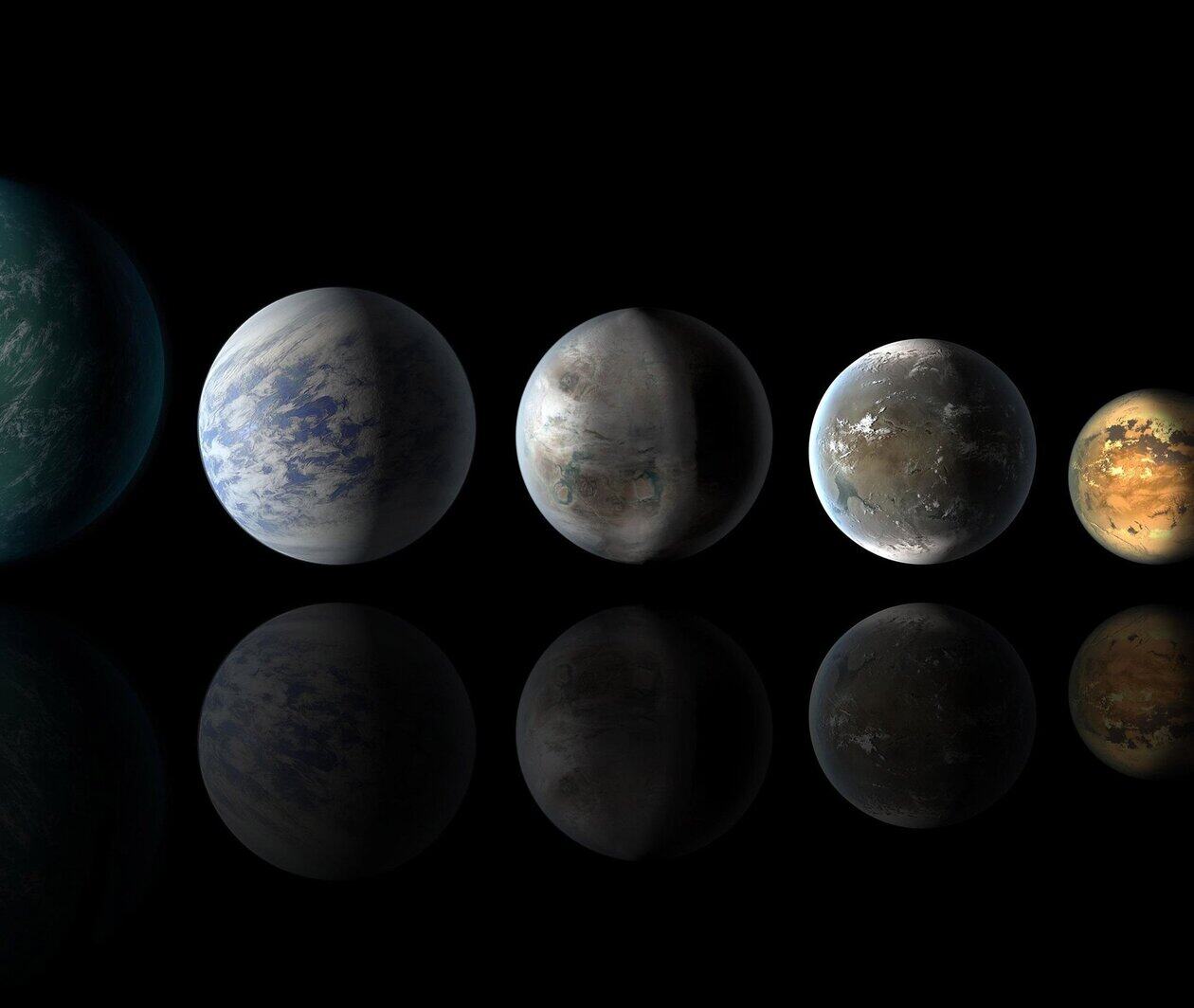This course is part of the Life on Mars, Earth and Beyond with Dr Louisa Preston ExpertTrack
Icy Moons and Exoplanets
Explore the potential for life on icy moons, what exoplanets look like, and the role biosignatures play in the search for life.

Duration
3 weeksWeekly study
3 hours100% online
How it worksIncluded in an ExpertTrack
Course 4 of 5
Icy Moons and Exoplanets
Not so long ago on exoplanets far, far away
There are billions of stars outside our solar system, many with planets of their own orbiting them. Exoplanets are these planets that exist outside our solar system.
On this three-week course, Dr Louisa Preston will take you through what exoplanets look like, as well as the structure of icy moons, and the likelihood of either supporting life.
What lies beneath the icy shells of Europa and Enceladus?
Without having any probes land on the icy moons Europa and Enceladus, it’s difficult to be certain of the environments they hold.
You’ll discuss the theories of what lies beneath the icy shells of these moons, as well as the potential they both have for habitability. With missions in the works to send probes to both Europa and Enceladus, you’ll explore the opportunities and challenges these future missions face.
What makes an exoplanet Earth-like?
Earth is an extremely special phenomenon; a perfectly balanced environment for cultivating and maintaining life. So far, we haven’t discovered any other planet like ours, but the search continues beyond our solar system.
You’ll investigate what exoplanets are and the different types that we’ve discovered. You’ll then look at the criteria that an exoplanet needs to meet to be considered Earth-like and what they might be able to tell us about life on earth and beyond.
Follow the search for extraterrestrial life
Starting closer to home, you’ll explore the special nature of the icy moon Titan’s structure and environment, and delve into the different environments on Titan that could host life.
This course will then guide you through the different biosignatures that experts search for when investigating exoplanets. With this knowledge, you’ll design and justify alien life, theorising a lifeform that could hypothetically live on an exoplanet.
Syllabus
Week 1
Icy moons
Welcome to the course
Let’s begin with an overview of what you’ll be learning this week before we delve into the details of three different icy moons.
Europa
Our first look at an icy moon takes us to Europa, belonging to the gas giant Jupiter.
Enceladus
Next, we’ll hone in on Enceladus, Saturn’s sixth-largest moon.
Titan
Finally, we’ll take a look at Titan, Saturn’s largest moon, and I’ll be chatting to Dr Melissa Trainer all about her work for NASA’s Dragonfly mission.
Weekly wrap-up
Here we'll recap some key concepts and look forward to next week, where we'll be exploring the edges of the Solar System and the stars beyond.
Week 2
Leaving the Solar System
Welcome to Week 2
This week we’ll explore the edges of the Solar System, including Uranus, Neptune and Pluto, and the stars beyond. We’ll also consider the role of stars in searching for exoplanets.
The edges of the Solar System
They may be far away from the Earth in distance, but could Neptune, Uranus or Pluto sustain life? Let’s find out! We’ll also explore smaller bodies, like comets and asteroids, and follow the journeys of the Voyager probes.
What lies beyond...
Here we will consider whether humans will ever leave the Solar System, and what we’d have to cross to leave it. We’ll also take a first look at exoplanets in preparation for Week 3.
Star light, star bright
Let’s look to the stars! We’ll start with our very own Sun, before we move on to how stars work, their different types and how they help us to navigate the universe.
Weekly wrap-up
Here we’ll recap some key concepts and look forward to next week, where we'll be exploring the faraway worlds of exoplanets.
Week 3
Exoplanets
Welcome to Week 3
This week we will explore exoplanets in all their glory: what do they look like? How do we detect them? What are we searching for there? And what are the goals of future missions to find them?
The diversity of exoplanets
Exoplanets aren’t all the same! Here we will explore some of the different categories, including hot Jupiters, hot Neptunes and Super-Earths.
A second Earth
What is the likelihood of another Earth-like planet, an ‘Earth 2.0’? Here we’ll explore the criteria it would have to meet, and the types of life it might hold if the conditions were right.
Hunting for exoplanets
Today, scientists think that most stars have at least one exoplanet – we just have to find them! Here we’ll look at methods for this, as well as past and future missions.
Course wrap-up
Now you’ve learnt all about exoplanets, it’s time to wrap-up and consolidate everything you have learnt in this course.
Prove you're job ready
Highlight the new, job-relevant skills you’ve gained and supplement existing qualifications with a hard-earned, industry-specific digital certificate – plus one for every course within your ExpertTrack.
- Learn the latest in your chosen industry or subject.
- Complete each course and pass assessments.
- Receive certificates validated by the educating organisation.
- Impress employers with learning outcomes you can add to your CV.
- Make your career dreams a reality.
Download a PDF
Learning on this course
On every step of the course you can meet other learners, share your ideas and join in with active discussions in the comments.
What will you achieve?
By the end of the course, you‘ll be able to...
- Investigate why exoplanets are so important
- Explain the significance of gas giants in the investigation of/search for Exoplanets
- Compare the main categories of exoplanet
- Describe the criteria to be considered an Earth-like planet
- Define the biosignatures searched for when investigating exoplanets
- Design and justify an extraterrestrial lifeform in accordance with given parameters
- Summarise key milestones in the history of searching for exoplanets
- Compare the key methods for searching for exoplanets
- Summarise the history and future of missions to exoplanets
Who is the course for?
This course is designed for anyone interested in the fundamentals of astrobiology, particularly the icy moons of our solar system, Exoplanets and whether life exists outside our star system.
It will be especially useful to university applicants looking to identify areas that they’d like to specialise in and STEM teachers looking to bring science to life for their students.
Who will you learn with?
I am an astrobiologist, geologist, and author at the Natural History Museum in London. I am also on the science team for the European Space Agency ExoMars 2022 Mars rover ‘Rosalind Franklin'.
Start learning today - free 2-day trial
After your free trial you can:
- Pay $39 per month to keep learning online
- Have complete control over your subscription; you can cancel any time
- Work at your own pace and set your own deadlines at every stage
- Only pay while you’re learning; the subscription will cancel automatically when you finish
- Complete online assessments to test your knowledge and prove your skills
- Earn digital course certificates and a final award that you can share online, with potential employers, and your professional network
- Keep access to the content of courses you complete even after your subscription ends
Learning on FutureLearn
Your learning, your rules
- Courses are split into weeks, activities, and steps to help you keep track of your learning
- Learn through a mix of bite-sized videos, long- and short-form articles, audio, and practical activities
- Stay motivated by using the Progress page to keep track of your step completion and assessment scores
Join a global classroom
- Experience the power of social learning, and get inspired by an international network of learners
- Share ideas with your peers and course educators on every step of the course
- Join the conversation by reading, @ing, liking, bookmarking, and replying to comments from others
Map your progress
- As you work through the course, use notifications and the Progress page to guide your learning
- Whenever you’re ready, mark each step as complete, you’re in control
- Complete 90% of course steps and all of the assessments to earn your certificate
Want to know more about learning on FutureLearn? Using FutureLearn

